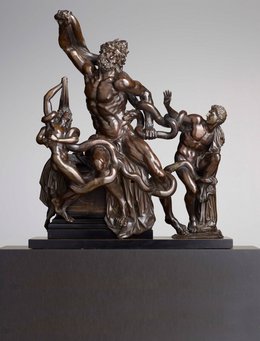
Lukáš Rittstein: Tour
In expeditions to New Guinea Rittstein went in search of the last indigenous inhabitants of the island, who even today live in secluded locations and in complete isolation. The idea for “Tour“ arose inafter the artist’s first encounters with indigenous tribes in western New Guinea, the mountain tribe of the Yali Mek and the Korowai Batu forest nomads, who live as hunter-gatherers, conduct warfare with bows and arrows and ritually eat their slain enemies.
- Exhibition Site Albertinum
- Dates 23/06/2011—16/10/2011
text1
Passers-by can enter the coach and sit down on comfortable upholstered seats. A steel pipe protrudes through the roof and the front windscreen of the bus. “Although the seats grant a spectacular view, the piloting process remains hidden from sight of the travellers. The meaning and aim of our temporary trip to the planet Earth is unknown,” Rittstein explains. Instead, the passengers can watch a film about a forced marriage in New Guinea on two TV sets. The video shows an excerpt from a historical film made by the Professor of Anthropology Leopold Pospíšil (Yale University). In the 1950s he did anthropology research in New Guinea and documented, among other things, the forced marriage of a girl from the Kapauku-Papua tribe. Rittstein visited Pospíšil in 2007 and recorded the researcher’s sober commentary explaining the old film images; he combined the two into a film entitled “The Bartered Bride”, which can be seen on the coach.
“Tour” is one of many works of art in which Rittstein explores the everyday life of the islanders and compares it with our own culture. Despite all the obvious differences, he enquires after comparable traditions and his works consciously intervene in the prevailing conditions. The coach, which he describes as an “anthropological mobile monument”, serves primarily as a means of rapprochement, but also leads to unexpected confrontation between two different life-worlds.
After the DOX Centre for Contemporary Art in Prague, Dresden is the first exhibition stop for “Tour” and marks the start of a journey around the world. For the first time, this work of art is being shown outside a museum institution and in the next few months it will be on display in various places which are normally closed to traffic or where no roads have yet been constructed. In this way, Rittstein will evoke the curiosity of pedestrians and encourage passengers who find themselves together in the bus like a tour group to exchange their thoughts and ideas. The preliminary final stop will be the rain forest of western New Guinea, where the islanders come into contact with unfamiliar machinery and technology which, for us, constitute part of our everyday life.
weitere Ausstellungen


de sculptura. selected works from the Dresden Skulpturensammlung (Sculpture Collection)
Kunsthalle des Salzburg Museum




